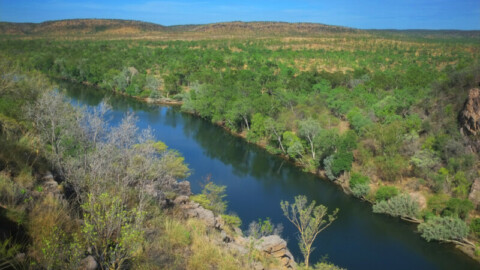Trees can pose a significant threat to the safety and reliability of electricity networks. Now the impact of a changing climate on vegetation, including an increase in bushfires, looks set to become the greatest risk to the management of network assets. A new collaborative project by Endeavour Energy and NM Group is using spatial analysis and sophisticated model building to map current vegetation, see how fast it is growing towards powerlines and identify potential hazards posed by specific trees, creating a sophisticated risk-based vegetation management program to combat these challenges.
The need for holistic vegetation management programs has increased for Australian utilities as they start to face even more threats to their networks.
On average, 84 homes are lost to bushfires each year and CSIRO research suggests climate change will lead to increases in ‘very high’ and ‘extreme’ fire danger rating days, and earlier starts to the fire season, which we’ve already experienced in late 2019.
Looking at New South Wales specifically, studies have projected that the probability of extreme fire risk will increase by around 25 per cent by 2050.
These predictions are especially worrying for energy utilities that have network infrastructure in high bushfire risk areas, including Endeavour Energy, who has around 12,000km of overhead powerlines running through Greater Western Sydney, the Blue Mountains, the Southern Highlands and the Illawarra region of New South Wales.
In order to be on the front foot of these risks and ensure the safety of customers and continuity of supply, Endeavour created a project to better understand the dynamics of vegetation on its large, dispersed electricity distribution network.
The aim of the project was to create a holistic multi-year picture of vegetation threats to its electrical network, so it can not only identify current hazards, but see how these will change in the future, and put steps in place to proactively manage them.
Datasets and models allowing for targeted maintenance
Working with electrical network technology service company, NM Group, the project used spatial analysis and model building to combine multi-temporal LiDAR data with data from other sources including historical meteorology and vegetation work patterns, as well as actual observations of tree fall.
They used cloud processing to process these massive datasets and create localised models which described where vegetation was situated, how fast it was growing towards powerlines and the potential hazards posed by individual trees based on a predictive index.
The findings are being used to inform the works undertaken by Endeavour’s maintenance team so they can target specific areas for ongoing inspection trimming and tree removal works.
Making maintenance operations more targeted allows the utility to better manage network risks while minimising costs and increasing asset management efficiencies.
In effect, these efficiencies help keep downward pressure on its network charges while still maintaining a safe and reliable power supply to customers.
Applying new technology to better manage vegetation risks
Phase One of the project occurred in 2018 and involved a significant amount of research and collation of numerous datasets from multiple sources.
This was in addition to field work where measurements and observations from over 400 trees across 43 sites were collected.
Both in the field and using a desk-based inspection of the LiDAR data, the location of tens of thousands of fallen trees was also pinpointed.
Using the principle that by analysing and understanding patterns of past tree fall we can begin to identify areas at higher risk of tree fall in the future, this provided one half of the dataset that was used during a machine learning process to identify vegetation, soil, terrain and weather scenarios most likely to contain tree fall hazards.
The aim of this phase was to investigate if LiDAR could identify trees that had the potential to fall onto the electricity network, with a view to developing a risk-based approach in the management of hazard trees.
In doing this, the project was able to:
- Unlock the value in LiDAR data
- Develop vegetation inventory (canopies)
- Understand tree clearance per bay and establish program/contract compliance
- Understand growth analysis to estimate the rate of vegetation growth towards the wires and how long until non-compliance
- Identify hazard trees/fall-in risk – which trees were likely to fail and their locations
- Identify risk vs investment opportunities
This process produced a rich GIS database for the utility, as well as detailed reports on vegetation growth and fall risk.
These included breakdowns on historical patterns of growth rate span and predictions for the next five years, as well as guidance on individual trees in terms of the relationship of that tree to the nearby span – including its ability to fall onto a powerline and the size of the overstrike in the ranked likelihood of the tree to fall.
The project findings noted a pattern match between previously fallen trees and trees identified in the model from the LiDAR data of up to 80 per cent accuracy.
This was an impressive result, especially considering the many diverse factors affecting tree fall which may not have been incorporated into the modelling.
The findings were also verified and field tested by a specialist independent group and validated by Endeavour Energy specialist arborists.
Expanding the model
Phase Two of the project began in 2019 and is currently ongoing. It is looking at environmental parameters to determine how quickly trees responded to a shift in climate.
The large computing power generated from NM Group will input a variety of open source datasets, Endeavour Energy LiDAR, contractor cutting records and specialist Visual Tree Assessments (VTA) from the utility’s tree management officers.
In this phase, Endeavour Energy is currently reviewing:
- All results to align with standardised risk matrices of likelihood and consequence
- Whole-of-network LiDAR outputs as opposed to only the bushfire analysis
- Provision of ‘strings’ which are the 3D representations of the powerline catenaries
The aim of this is to have a sound grasp of environmental parameters to predict how vegetation is likely to respond to these changes in climate.
The plan is to also introduce key metrics to evaluate post-cut clearances and use machine learning (AI) to optimise program delivery ahead of bushfire season. The results of this model will be finalised by June 2020.
The utility is also reviewing the scope for implementation of model testing, which will form Phase Three.
What other utilities can learn from this project
Using spatial analysis technology has shown that datasets, from LiDAR through to tree trimming records, can be used to design a risk-based vegetation management program. This data can then help utilities reduce operating costs.
Endeavour Energy is now able to target specific trees that require specialist resources and inspections, and can identify potential hazards that might otherwise have been missed.
Preventive maintenance schedules can also be created around predicted vegetation growth rates, so specific areas aren’t being over or under serviced.
The Endeavour Energy and NM Group project team plans to continue to refine and extend their technical capabilities and improve the way that the data can be collected, integrated and shared.
The plan is to then roll out this technology to other parts of the network that might not be in a bushfire risk area.















